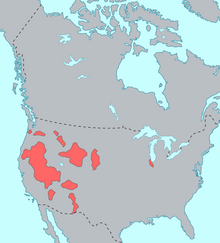Xanian: Difference between revisions
Vivaporius (talk | contribs) No edit summary |
Vivaporius (talk | contribs) No edit summary |
||
| Line 4: | Line 4: | ||
|pronunciation = {{IPA|/ʒakømɑrɪ/}} | |pronunciation = {{IPA|/ʒakømɑrɪ/}} | ||
|states = [[Xania]] | |states = [[Xania]] | ||
|image = | |image = | ||
|imagesize = | |imagesize = | ||
|imagecaption = '''Xâkömari''' | |imagecaption = '''Xâkömari''' | ||
|speakers = 5.1 million<br/>334,656 overseas | |speakers = 5.1 million<br/>334,656 overseas | ||
Revision as of 20:46, 9 July 2014
| Xanian | |
|---|---|
| Xâkömari | |
| Pronunciation | [/ʒakømɑrɪ/] |
| Created by | – |
| Native to | Xania |
| Native speakers | 5.1 million 334,656 overseas (2014) |
Xanic
| |
Standard form | |
| Official status | |
Official language in | Xania |
| Regulated by | Imperial Xanian Linguistics Institute |
| Language codes | |
| ISO 639-1 | xa |
| ISO 639-2 | xan |
| ISO 639-3 | xan |
Location of nations where Xanian is a spoken language | |
Xanian (Xâkömari, /ʒakømɑrɪ/) is a North American language spoken by 5.1 million people, and the official language of Xania. It is a member of the Xanic language family, and largely regarded as a language isolate, the second largest of its type in the world after Korean. For centuries, the Xanian language has remained distinct and separate from the rest of the languages around it, with little influence on the language until Xania's emergence into the world community in the late-1800s. Virtually nothing is known of the language's prehistory, and all information on when it first appeared in Xania exists, leaving many to speculate that the language arrived with its current inhabitants, the Xanians.
Phonology
Main articles: Xanian phonology and IPA for Xanian
Consonants
| Bilabial | Labio- dental |
Alveolar | Post- alveolar |
Palatal | Velar | Glottal | ||||||||
|---|---|---|---|---|---|---|---|---|---|---|---|---|---|---|
| Nasal | m | n | ||||||||||||
| Stop | t | d | k | |||||||||||
| Affricate | tʃ | dʒ | ||||||||||||
| Fricative | v | s | z | ʃ | ʒ | h | ||||||||
| Approximant (Lateral) |
j | |||||||||||||
| ɹ | l | |||||||||||||
Vowels
| Front | Near-front | Central | Back | |
|---|---|---|---|---|
| Close | [i] | |||
| Near-close | [ɪ] | |||
| Close-mid | [ø] | |||
| Mid | [e] | [o] | ||
| Near-open | [ɐ] | |||
| Open | [a] | [ɑ] |
Alphabet
The Xanian language has its own alphabet, which has traditionally been the only one in use by the speakers of the language. However, the usage of Latin in place of the Xanian alphabet only recently came to supplant the later as more and more Xanians in the United States adopted the Latin scipt for practical reasons. However, the Xanian script remains the primary written script in regions where Xanians are the primary inhabitants. On official documents of the Xanian people, the Xanian alphabet is always used, with one in the Romanized alphabet put out shortly thereafter. All icons and emblems used by the Xanians which possess writing on them, are always in the Xanian alphabet.
| A a | Â â | D d | E e | H h | I i | Ī ī | J j | K k | L l | M m |
|---|---|---|---|---|---|---|---|---|---|---|
| [a] | [ɐ] | [d] | [e] | [h] | [i] | [ɪ] | [dʒ] | [k] | [l] | [m] |
| N n | O o | Ö ö | R r | S s | Š š | T t | V v | X x | Y y | Z z |
| [n] | [o] | [ø] | [ɹ] | [s] | [ʃ] | [t] | [v] | [ʒ] | [j] | [z] |
Stress, rhythm and intonation
Xanian is a highly stressed language, with emphasize on the first or second syllables of a short word, or first to middle syllables of a longer word, typically regarded as the norm. The stress on words with Xanian is often considered similar to the stressing of words in the English and Latin, though Xanian words will have circumflex marks to indicate when stress on a particular syllable is required, much as with the accents in Latin and Romance languages. With regards to rhythm, Xanian is a stress-timed language, with stressed and unstressed syllables carrying equal weight in a word though the stressed portion may be shorter than the unstressed portion in letter length, but longer when voiced.
